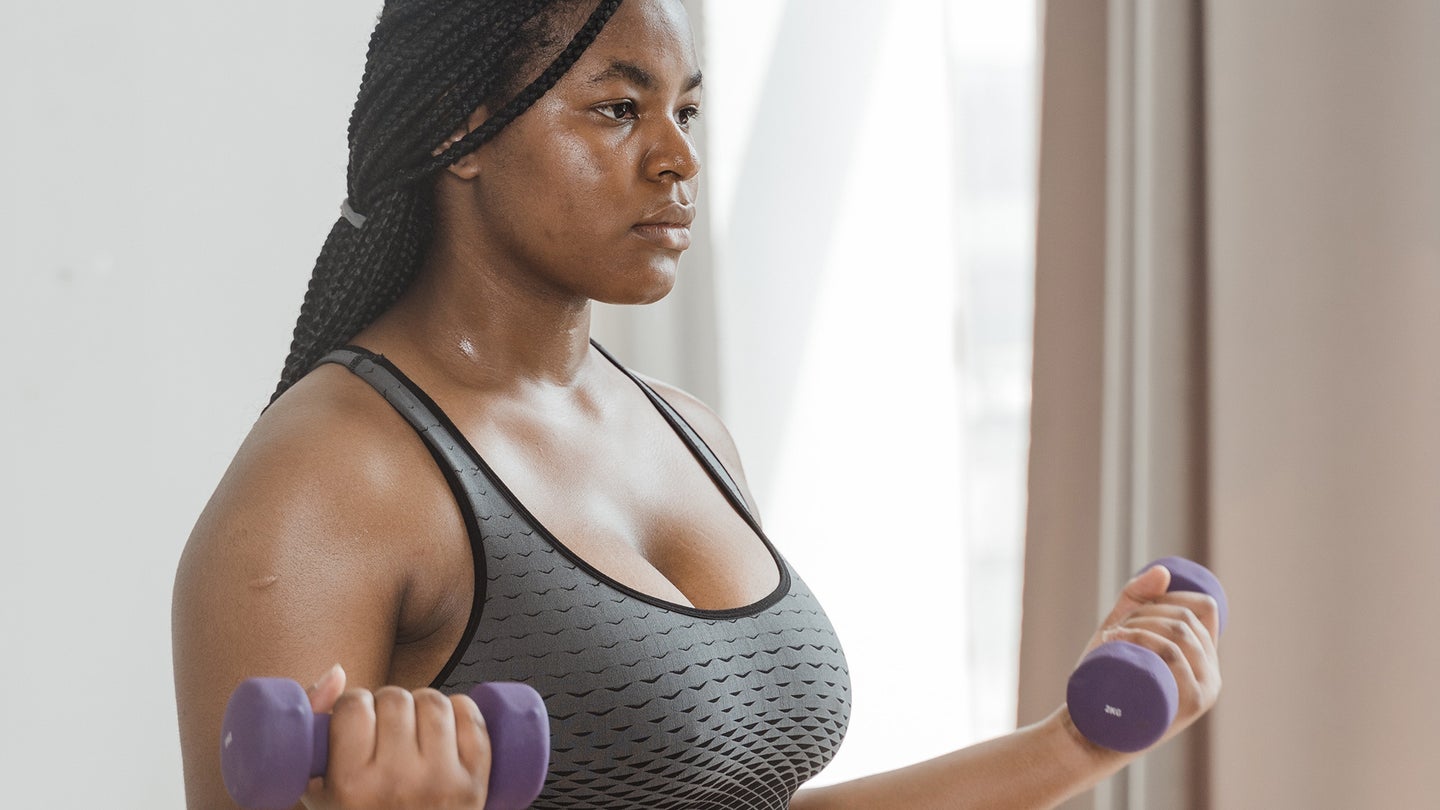How to start lifting weights—even if you’ve never picked up a dumbbell in your life
Experts weigh in on the fitness trend that’s here to stay.

Over the past few years, more and more Americans have started lifting weights. In fact, the number of people who booked strength training classes on the ClassPass app increased by 94 percent in 2022.
This trend is in line with new waves of research that have touted the health benefits of weightlifting. A 2022 study published in the British Journal of Sports Medicine found that training with weights for just 30 to 60 minutes a week can significantly reduce your risk of premature death from all causes. Meanwhile, a 2018 meta-analysis published in JAMA Psychiatry found that resistance training can help ease symptoms of depression.
If you’re interested in strength training but have never set foot in a gym, it can be difficult to know where to start. There’s a lot of information about it on social media, much of it offering conflicting advice on which strength-building routines are the most effective. Plus, even if there are experts posting on these platforms, many fitness content creators aren’t certified professionals and only offer advice based on their own experiences.
So before you start your fitness journey, make sure you learn what the experts have to say about what a safe and efficient strength training routine looks like.
Find your equipment
You can start strength training at the gym, where you’ll find all the gear you need and more. If possible, Joseph LaVacca, a personal trainer and owner of Strength in Motion Physical Therapy in New York City, recommends signing up for a gym that’s slightly above what you’d want to spend: “If it’s too cheap you probably won’t go.”
If a gym is out of your budget or you’d just prefer to avoid it, you can do strength training at home or anywhere else you have the space and permission to do so, like a public park. No matter where you choose to exercise, make sure you have enough space to do basic strength training moves with proper form, says LaVacca. If you have room to do a couple of lunges without feeling cramped, you should be good to go.
[Related: Best home fitness equipment of 2023]
Exercising at home will also require you to get your own set of dumbbells, preferably one that includes 5-, 10- and 15-pound weights. These are great for beginners because they allow you to test what feels right and add weight as you go along. Resistance bands (which come in a wide range of weights), kettlebells (which typically start at five pounds), and adjustable dumbbell sets, are great save-spacing alternatives to regular dumbbells. You’ll find most of this gear online, at sporting goods stores, and even general retailers.
There’s no consensus about what type of weights are the easiest and safest for beginners to start with, says Ignacio Salazar, a personal trainer at Studio 16, a private fitness studio in New York City. But as long as you’re focusing on your technique and form, and keeping it as basic as you can, anything from bodyweight to kettlebells and dumbbells should work, he adds.
Start small and listen to your body
If you haven’t lifted much ever, it’s important not to go too hard too soon. There’s no rule of thumb on the amount of weight you should start with, as everyone is built differently. But whatever that is for you, it should feel slightly challenging—not painful or impossible—after one set, says LaVacca.
He recommends starting by lifting for 20 to 30 minutes on two separate days of the week. During this time, pick three to five exercises and aim to complete around three to five sets of eight to 10 reps each.
It’s best to start with basic moves, says Salazar. You can try our guide with three strength exercises everyone should do, but there are more examples to choose from:
Stay consistent
To gain strength and muscle you’ll need to slowly but progressively lift more weight, says Salazar. It’s important not to get carried away and add it on too quickly—lifting more than your body is prepared for can lead to pain and injury.
LaVacca has a trick for figuring out when to add on more weight: Pay attention to your perceived exertion on a scale of one to 10 after completing three reps of a certain exercise. If after that you rank a movement at about a seven or eight—meaning your heart rate is up and you’re feeling challenged while still maintaining the correct form—you’re in the right weight range. If it’s less than that, you could add more weight.
[Related: The 6 essential parts of an effective workout]
In the beginning, especially if you’re coming from being sedentary, you’ll likely be able to add weight more easily and quickly, says Salazar. But more than the amount of weight, the key to gaining strength is consistency.
Once you’ve been lifting steadily for about eight weeks, La Vacca recommends adding a third day to your routine and adding variety to it by trying out new types of exercises. Slowly but surely, keeping at it will ensure that you get healthier and stronger.